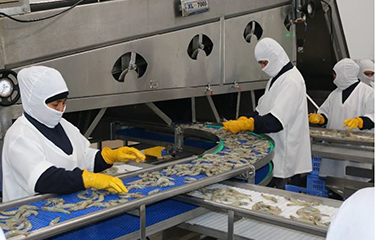José Antonio Camposano, executive president of Ecuador’s National Chamber of Aquaculture (CNA), recently said the country’s shrimp farmers had a challenging year, despite record numbers in shrimp production and exports.
Rabobank’s latest aquaculture report, “What to Expect in the Aquaculture Industry in 2023,” predicted the global shrimp supply will continue on its positive trajectory. The report also estimated Ecuadorian shrimp production will grow between 18 and 30 percent in 2023.
But as 2022 showed, numbers and predictions don’t always reflect the realities on the ground. SeafoodSource spoke with Camposano regarding what he feels the main issues are for Ecuador’s shrimp farming industry, and to get his estimate of how the industry will fare in 2023.
SeafoodSource: What is your outlook for 2023?
Camposano: In an industry like ours, things can change from one day to the next, as seen, for example, in the awakening of Chinese demand. If you follow the price of shrimp, it is up for now, and the only reason is that China activated its demand and is able to place orders. China's growth projections are much lower than expected for 2023; There is talk of 2 to 3 percent growth compared to 6 percent expected two to three years ago, and that is nothing compared to the 11 percent growth [recorded] 10 years ago.
However, that 3 percent in a country of 1.4 billion people is always going to be something positive. That's why they’re buying and that demand automatically makes the price increase. But that can always change. The industry is very attentive to market signals, number one, because that’s what most sets the price. Let's see what happens with the United States because today we have an installed industry that serves the U.S.A. We didn’t have that four years ago, but today we have installed capacity that continues to expand because we have almost doubled the capacity of peeling and added-value.
With that installed capacity, Ecuador pays close attention to what happens in the United States because the more whole product you make, which is what goes to China, the more you have for tails. If your volume grows and there is more whole shrimp, you have more tail to peel, there is more added-value.
Today, we are in a better price situation than in December. It has really improved because of that demand in China. Moreover, Ecuador is already preparing to attend its two most-important fairs in China which are Shanghai and Qingdao at the end of the year. We’ve already booked and have high expectations for what can happen in our main market today.
SeafoodSource: Any particular concerns facing the industry in 2023?
Camposano: We’re concerned over the issue of raw materials.
I think that 2022 taught us to be attentive with certain international variables that we weren’t monitoring before associated with raw materials. Now we’re much more attentive to what happens in the market. We met with Ecuador's president [Guillermo Lasso] during the first week of January and again in mid-February to review some key issues such as connecting shrimp farms to the electric grid and market access issues, we have already closed [a trade agreement] with China and we are negotiating with South Korea. These are two agreements that are of enormous interest to our industry. There are many expectations that have us motivated to continue working this year in having the sector advance.
SeafoodSource: With the increase in raw material prices and the end to diesel subsidies, you said that 30 percent of shrimp farmers could face bankruptcy. Do you anticipate market consolidation there?
Camposano: Two characteristics of the industry must be taken into account. Ecuador may be one of the best-integrated sectors within shrimp-producing countries, with actors handling considerable volumes and having their own capacities, such as packing, that export and can guarantee traceability. There are well-known, sizeable actors such as Santa Priscilla at the head, then Songa and Omarsa. It also happens that in Ecuador ...
Photo courtesy of Ecuador's National Chamber of Aquaculture








